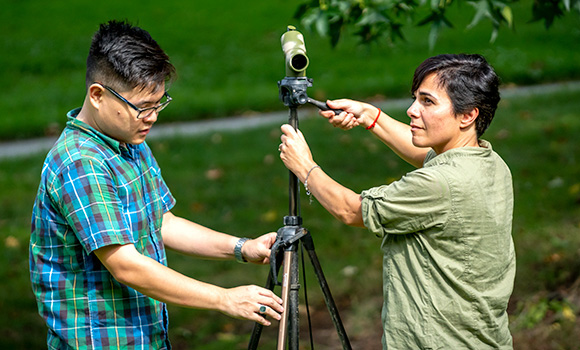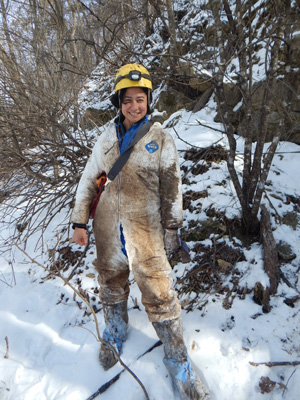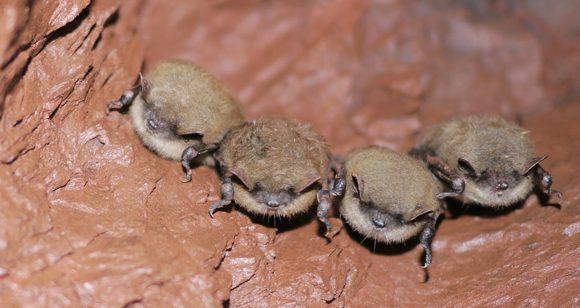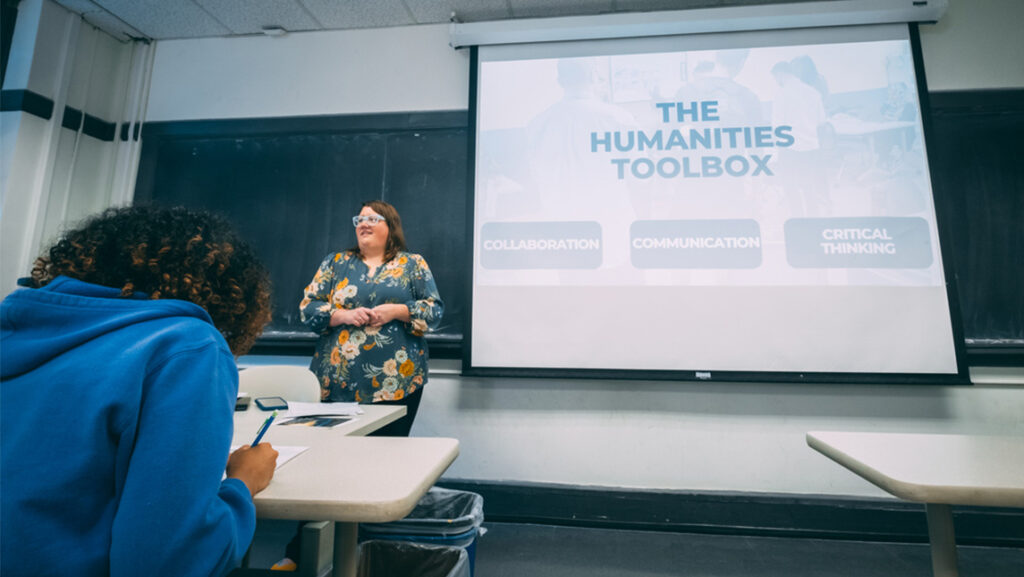Repost from UNCGNow
Don’t get spooked out, but it’s officially Bat Week.
Bats may be more celebrated this time of year than others, but their significance in our everyday lives often goes – like the bats themselves – unseen.
Of the approximately 5,000 identified species of mammals, almost one fourth are bats. They trail just behind rodents, to form the second largest group of mammals in the world.
While we are hardly aware of them, they perform an incredibly important function, devouring thousands of insects each night – insects that would otherwise spread diseases to humans and destroy crops that make up a large portion of our food supply.
Bats are also excellent bioindicator species, meaning that the presence of bats signifies the health of the environment, and how healthy it is for the humans. North Carolina is home to 17 different species of bats, the largest number on the East Coast.
“North Carolina is really special for bats,” says UNC Greensboro’s Head of Biology Matina Kalcounis-Rüppell. “We’ve got mountains and coast and everything in between. That diversity makes our state home to bats from both the northern and southern parts of the country – and makes it a great place for research on bats and their habitats.”
Kalcounis-Rüppell and her colleagues in the UNCG Bat and Mouse Lab gather acoustic data from 161 bat research sites across North Carolina. Their work on the Carolinas Regional Acoustic Bat Monitoring project has served as a pilot for the North American Bat Monitoring Program, a continent-wide survey effort to promote effective bat conservation.

Unfortunately, as Kalcounis-Rüppell and other researchers know, the only mammals capable of true flight are in trouble. Their populations have declined globally for several reasons, the most prominent being a devastating disease known as White Nose Syndrome.
The disease has led to one of the most dramatic decreases in North American wildlife in recorded history. It’s caused by a fungus that grows on bats’ noses, wings and ears during hibernation and causes them to wake from hibernation too early, leading to starvation and widespread die-off.
On Friday, Nov. 2, world-renowned scientist Dr. Christine Salomon will come to UNCG to give the lecture, “Tales from the underground: Searching for biocontrol treatments for white nose syndrome in bats.”

At the Center for Drug Design at the University of Minnesota, Salomon is investigating natural products from bacteria and fungi that might help control the spread of White Nose Syndrome without harming bats or the places they inhabit. For several years, she has collected samples from bats and their roosts in the Soudan Mine in northeast Minnesota, and her lab is looking toward testing biocontrol agents on cave interiors.
Salomon’s visit is the result of collaboration between the Department of Biology and the Department of Chemistry and Biochemistry and is part of the Syngenta Science Symposium, which was established nearly two decades ago as a forum to engage UNCG faculty and students as well as scientists and the public in the region.
In addition to biologists and wildlife conservationists, this work is of great interest to chemists and biochemists, including those that make up UNCG’s MC2, or Medicinal Chemistry Collaborative, a group of several dozen researchers who study natural products to identify compounds of medicinal value.
“She’s an outstanding fit for our symposium,” says MC2 co-director Nicholas Oberlies.
“The timing is perfect to raise awareness about bats and their importance in ecosystem health and wellness, and the promise of biocontrol through natural products of diseases that impact both wildlife and humans,” adds Kalcounis-Rüppell.
Salomon says she is looking forward to connecting with researchers at UNCG and other academic institutions, federal and state agencies and nonprofit organizations who have been working on various aspects of White Nose Syndrome, bat biology, epidemiology, ecology and conservation.

The Nov. 2 lecture at 1 p.m. is free and open to the public and will be in the Sullivan Science Building, Room 101. The public is also invited to a reception immediately following the talk, in the Sullivan first floor lobby, where they can speak with Dr. Salomon and interact with faculty and graduate students from the Departments of Biology and Chemistry and Biochemistry to learn more about bats and natural products.
The UNCG Bat and Mouse Lab will also present two events as part of Bat Week, a worldwide effort to promote bat conservation awareness. Those events will be Oct. 28 at 10 a.m. at the Greensboro Science Center and Oct. 29 at 6:30 p.m. at the Kathleen Clay Edwards Family Branch Library.
To view a PBS documentary that features UNCG postdoctoral researcher Han Li discussing bat populations and White Nose Syndrome, visit the Campus Weekly post here.
Repost from UNCGNow
Story by Susan Kirby-Smith, University Communications
Photography courtesy of Christine Salomon and by Martin W. Kane, University Communications



